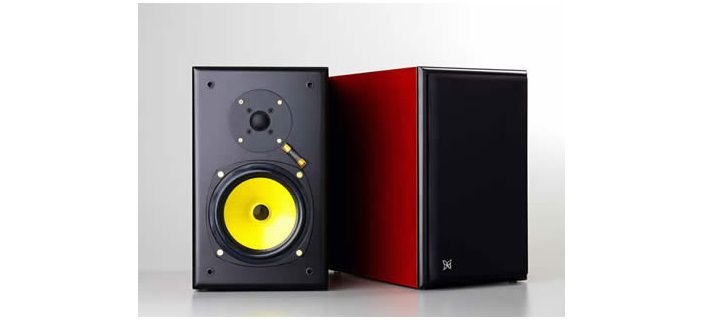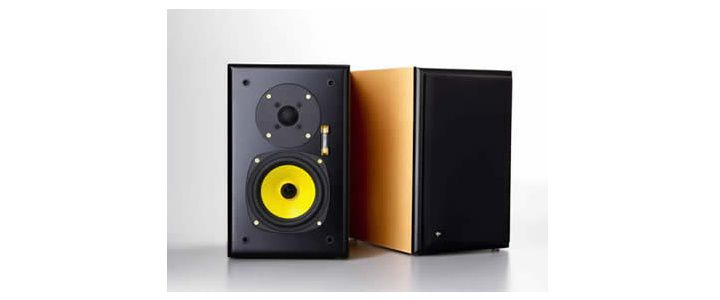
I was sitting around a library table with Tam Carlson discussing component and loudspeaker selection for the William Ralston Listening Room and Music Archive at the University of the South, which I reported on in connection with my review of the VPI Scout turntable, when he mentioned to me that he had just gotten the Soundsmith Strain Gauge cartridge and phono preamplifier in for audition. Not being wise in the ways of vinyl, I had never heard of the company and had no idea what a strain gauge cartridge was. After he described it to me, my interest was piqued and I did some research. Since this is not a review of the Strain Gauge cartridge, and I’m pretty sure I’d botch the description anyway, I’ll simply refer you to Michael Fremer’s excellent explanation and review published in Stereophile a few months back.
Fascinated by a company that would offer such unique technology, I made a point of looking up Soundsmith at CES 2010. They ran their demos with a VPI HR-X turntable, their Strain Gauge cartridge, phono stage, line stage, and power amp, and their Dragonfly and Monarch loudspeakers. At the time, I was impressed that they achieved such good sound with small speakers in an acoustically challenged hotel room - so much so that visiting their room at subsequent trade shows is something I always look forward to. When I embarked on reviewing entry-level components, Peter Ledermann at Soundsmith was one of the first people I contacted. I told him I’d be interested in reviewing either the Dragonfly ($1999.95/pair) or the Monarch ($2999.95/pair) loudspeakers. To my surprise, he said he’d send both. Great – in for a penny in for a pound!
The Monarchs are a medium sized monitor, measuring 14”H x 8.5”W x 12.5”D and weighing in at a hefty 22 pounds each. The driver compliment is a 6” woofer and a 1” fabric dome tweeter, giving them a frequency range of 47Hz to 22kHz. Sensitivity is 88db. You can also upgrade to a ribbon tweeter for an upcharge of $700. The pair Peter sent were finished in a gorgeous piano black lacquer and looked quite elegant atop my Target HR speaker stands. The black grills cover the canary yellow woofers, something I like the look of. With the grills off, you can also see what looks like a fuse. It is in fact a “lamp clipping indicator.” If you drive your speakers too hard, the lamp begins to flicker, letting you know that you had better turn the volume down before you blow your tweeters. During my audition, I would occasionally crank up the volume, though I never saw the lamp flicker. I did not keep increasing the volume until the lamp flickered just to see if it worked. I trust that it does. No sense blowing out either my eardrums or the tweeters for a brief wow moment.
I always start off with vocals to get a sense of a speakers’ performance. I skipped over Diana Krall – too much of a good thing is a bad thing. Instead, I turned to Carly Simon’s classic 1971 album Anticipation on Elektra. I picked up my copy recently at a sidewalk sale for a quarter. After a good cleaning in the Spin-Clean Record Washer I reviewed last month, it sounded as good as new. Apparently, its previous owner didn’t play it nearly as much as I did back in the day. The cut I was interested in was Our First Day Together, in which Carly repeatedly heads off into a minor key, and which is evocative of Sisotowbell Lane from Joni Mitchell’s 1968 debut album Song to a Seagull. Carly’s voice was tonally rich, with delicate ambiance, and a high-end completely free of glare. In contrast to the previously reviewed Living Sound Audio LSA.5 monitors, which impressed me with amazing pinpoint imaging, the Monarchs threw a wider and deeper, though somewhat more diffuse, soundstage. This can be adjusted somewhat with toe-in, though I thought they sounded best facing straight ahead. Overall, you had a sense of being a little further back in a larger venue. I do not say that the least bit disparagingly; it is a quite impressive feat, though different. No two speakers are alike, and we each much select one which fits both the music we listen to and our own sensibilities.
Nowhere were the benefits of this wide and deep soundstage more apparent – and appealing – than on a Philips recording of Mendelssohn’s Symphony No. 5, Op. 107 “Reformation” featuring the New Philharmonia Orchestra conducted by Wolfgang Sawallisch. The orchestra appeared well behind the speakers and stretched from wall to wall. The speakers simply disappeared. The presentation was somewhat laid back, much like my Meridian DSP5500s, and the string tone was warm and pleasant, without a hint of harshness. The brass was perhaps a little rolled off, but this is likely due to both a distant miking pattern and the age of the recording. The music was completely enveloping.
I next put Thelonius Monk’s 1968 recording Underground on the platter. The opening cut. Thelonious, is an infectious piece, featuring a melodious piano, an understated bass line, and a sparse drum kit. If your toe is not tapping and your head is not bobbing, something is wrong. Nothing was. These speakers definitely get pace and rhythm right. The piano was full sounding with little ambiance, indicating close miking, the bass distinct, and the cymbals crisp. Though warm, there was no lack of detail. As an aside, the cover art is nothing short of bizarre and bears no resemblance to the music on the album. If you pick wine by the way the label looks, you’re unlikely to have any idea about what you’re getting. The same goes for album covers. My hat’s off to music reviewers. What would we do without them?
Conclusion
The Soundsmith Monarchs are extremely enjoyable speakers. I would characterize them as being completely relaxed. Once you get them dialed in, you will simply forget about them and focus on the music – which is saying a lot. Unlike some speakers, which will wear you out, you definitely will not tire of hearing them during extended listening sessions. I was sad to have to pack them up. I knew I was returning something special.
If you are space-challenged, you might want to consider the Soundsmith Dragonflys ($1999). They are somewhat smaller and lighter, measuring 12”H x 7.5”W x 10.5”D and weighing 17 pounds each. Although their more diminutive size limits the woofer diameter to 4.5”, they use the same 1” fabric dome tweeter and are similarly voiced. As one would expect, their sensitivity is slightly lower at 86.5db. The pair I auditioned came in a very attractive beech finish. Like the Monarchs, a ribbon tweeter upgrade is available for $700. The only downsides to the Dragonflys are that they will not play quite as loud as the Monarchs and their low-frequency extension is limited to 56Hz, but with careful placement toward the rear wall, the bass is quite acceptable. Nevertheless, I would recommend a subwoofer if you listen to orchestral music or rock and roll.

- Frank Berryman
Contact Information
The Soundsmith
8 John Walsh Blvd., Suite 417
Peekskill, NY 10566 USA
(914) 739-2885
(800) 942-8009
(914) 739-5204 (FAX)
http://www.sound-smith.com
[email protected]
Associated Equipment
Analog Source: VPI Scout; Dynavector 20X2 Special; Musical Surroundings Phonomena II
Digital Source: Windows 7 music server with ESI Juli@ soundcard; Halide Design USB to S/PDIF Bridge
Preamplifier: Meridian G68ADV; Benchmark DAC1 HDR
Power Amplifier: Meridian 557
Loudspeakers: Meridian DSP5500
Cables: Digital: Meridian; Analog and Speaker: Audience Conductor “e”; Power: Volex/Marinco
Headphones: Etymotic ER-4S
Accessories: GIK acoustic treatments, Target HR speaker stands, dedicated 20 amp circuit

